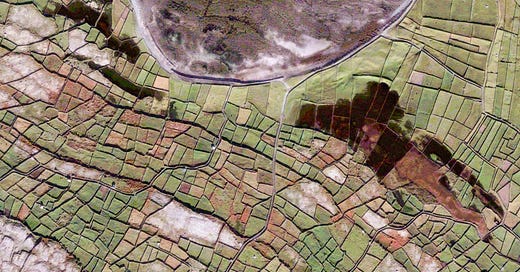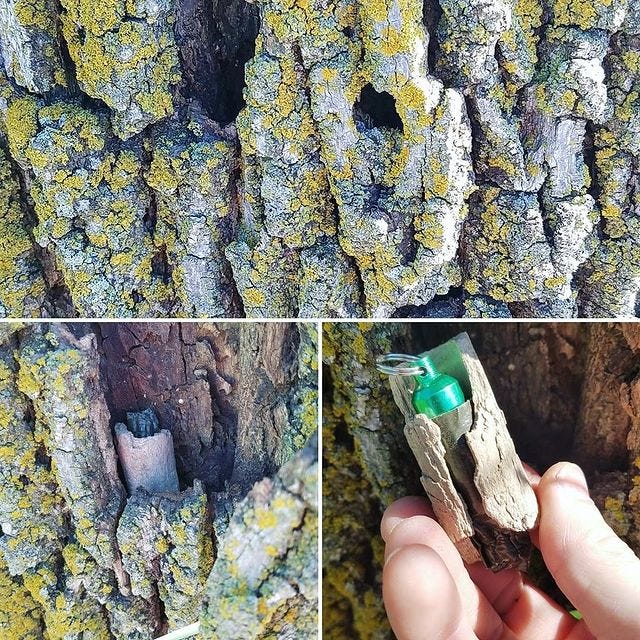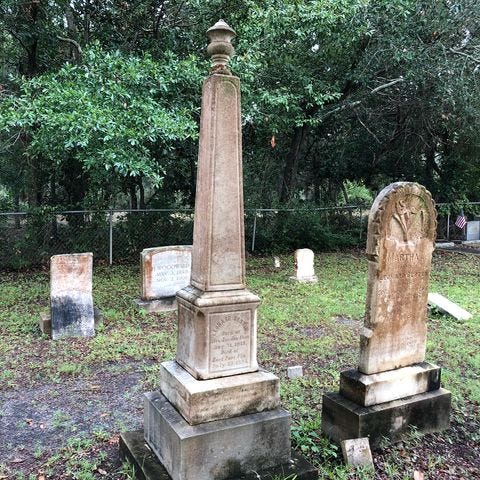👻 Geocaching | Issue #9

In the midst of a wild and terrifying year, we made it to what is, ironically, supposed to be the year’s spookiest day — Halloween! As a childless adult, I do not know what the consensus is on COVID-safe Halloween or Dia de Los Muertos festivities; I assume it varies wildly depending on the towns, cities, or states we live in. Regardless, I want to introduce you to a safe alternative, a fun activity that has gotten me outside exploring my community off and on throughout the years.

The Geocaching logo is a registered trademark of Groundspeak, Inc. DBA Geocaching. Used with permission.
Geocaching is the modern day equivalent of treasure hunting: people hide objects in public places, and other people look for them! In this post, I’ll explain what geocaching is, how to get started, and how we can use geocaching to take a spooky tour of our communities this Halloween/Día de Muertos weekend.
The story below demonstrates how it works, using Jack and Elizabeth as examples . . .
One day, Jack is hiking along the beach, and he notices a particularly interesting rock formation. “Wow,” he thinks, “other people should see this, this is so cool!” He goes home and reads up on the rock formation, and comes up with a plan for how to get other people to visit and learn about it. Jack is an avid geocacher, so he knows that if he hides an object in a tree nearby and enters the coordinates into the Geocaching database, other individuals and families in his community and from outside the area will come to look for it.
Jack develops a clever plan to hide a small, waterproof tube in such a way that it looks like part of a branch, and he leaves it in a tree near the rock formation for others to find. He often establishes geocaches in places where he can share natural history facts and stories, and he knows a few people from nearby who do the same for historic sites or other fun and interesting places.
A couple months later, we find Elizabeth, new to town and ready to get to know her new community! She has heard that looking for geocaches is a great way to explore, so she downloads the Geocaching app, checks the map for local caches, hops on her bike, and heads down to the beach. When she gets there, using her phone GPS as a guide, she spends about 10 minutes looking around the area for a small hidden object that she eventually finds tucked against a tree branch, camouflaged. She takes out a pen and signs the logbook rolled up inside. Pleased with her find, she plops down on the sand, looks around, and notices quite an interesting rock formation nearby, which she learns more about on the app.
The fun thing about geocaching is that it gamifies exploring the world, and people participate for many reasons. Some like it because it helps them learn about local history. Some like the design aspect of it, discovering how cleverly someone hid an object in plain sight or developing their own unique caches. Others use it as a virtual trail log, a way to mark down and remember places they have been. Families may enjoy it because it gets them working as a team toward the common goal of finding a cache. Overall, it’s just a fun thing that gets people outside, exploring and having fun in places on and off the beaten path all over the world.
To participate, all you have to do is sign up for an account online or download the Geocaching app on your smartphone — there is a free version that can still provide a lot of quality fun, or an annual subscription that gets you access to a wider variety of caches and other perks. You can also participate with a GPS, or if you want to get really old school, a map with detailed coordinate markings.
Some caches are huge (like below), and come with the added perk of having actual “treasure.” The golden rule for geocachers is that if you take something, you should also leave something in return.
Other caches are tiny, often called “micros.” These can be challenging to look for, but rewarding to find! I’ve often seen them camouflaged as bolts, screws, or otherwise inconspicuous everyday objects.
🎃 Halloween Geocaching 🍬
People who design geocaches looooove to get creative with their cache designs and locations. Here is one example of a spooky, zombie-themed geocache:
Halloween-themed or just generally spooky caches are relatively few in number, but one category of geocaches is prolific, and that’s the cemetery cache.
Since cemeteries are public property, ubiquitous, not highly frequented, and typically fenced (which provides many convenient hiding places for caches), it is natural that many geocaches end up in them.
There is a bit of controversy over whether hiding geocaches in cemeteries is respectful, but my opinion is that as long as the cache is not on—and definitely does not deface—a gravestone, then it’s okay. It is also the responsibility of the person looking for the cache to be respectful of any people visiting the cemetery for non-geocaching reasons; perhaps come back another day if there is a funeral service going on.
Furthermore, many of these caches, especially the ones that I have seen in the Midwest, take you to smaller, older cemeteries, which are loaded with local history, generally well-cared for, and definitely not someplace that most people visit unless they have a specific reason to go there.
Some communities have cemeteries that are utilized by locals for walking their dogs, going for runs, or other leisure activities, such as at Columbia Cemetery in Boulder, Colorado. This particular cemetery is a success story for preserving local history through cemetery conservation efforts.
Cemeteries connect us to the places we live, introducing us to past members of our communities whose legacies still live on. They also remind us of our place in time and of our finite existence as human beings on this earth.
Cemeteries are places that make us reflect upon not just the mortality of those who are buried there, but on our own mortality. These are not scary, creepy places but moving, rich, provocative places, with really powerful and positive meanings. -Keith Eggener, 2011, interview in The Atlantic
So there you have it, this is what I am proposing as a safe alternative to trick or treating this Halloween that also connects us to place. So let’s grab a bag of candy, pick out a local cache in our newly created Geocaching.com accounts, and go hunt for treasure! We might find more than we set out to look for.
With love,
Emily
Placeful Practice
Two options this week!
Identify a cemetery in your community, and carve out some time this weekend to go visit it. Make it a goal to learn something new about the history of the space, or of someone who is interned there.
Head over to www.geocaching.com and poke around. What caches are hidden in your community? Is there one hidden along one of your favorite walking routes? Perhaps at the end of a hike you have been meaning to do? Pick one out and look for it! If you have any questions about how it works, feel free to send me an email at place.emily@gmail.com.









